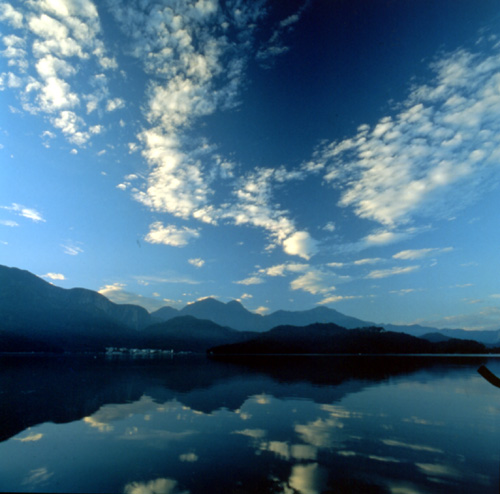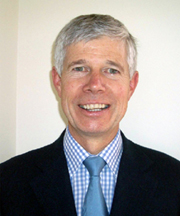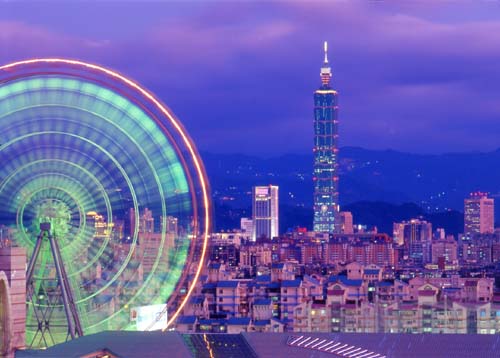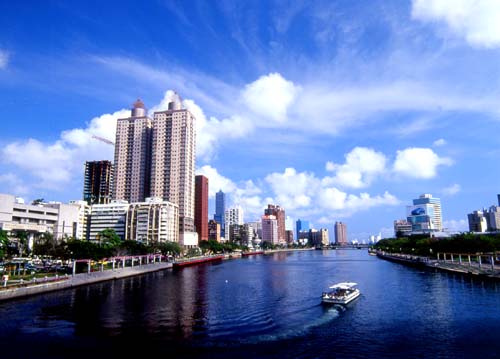 About
Conference
About
Conference
| Organization | Scientific Program | Speaker Profile |
| Conference Information | Professional Development Courses | Tours Program |
Perng-Jy
Tsai
Mark Stenzel
American Conference of Governmental Industrial Hygienists
Jenny Huey-Jen Su
Scott Clark
University of Cincinnati, USA
Yaw-Huei, Hwang
National Taiwan
University
Ruey-Yu Chen
Taipei Medical University
Student Assistant Program Chair
Chang-Fu, Wu
Thomas Chen
Chang Jung Christian
University
Vincent Chia-Jung Lu
Yi-Fang, Mao
National Yang-Ming
University
Yuh-When Liou
Chia Nan University
of Pharmacy and Science
Shih-Chun Lung
Academic Sinica
Shih-Wei Tsai
National Taiwan University
Scientific Program
Date |
Day 1 |
Day 2 |
Day 3, |
Day 4, |
Day 5, |
||||||||||||||||||
Room 1 |
1F |
Room 1 |
1F |
Room 1 |
1F |
Room 1 |
1F |
||||||||||||||||
09:00~09:50 |
Opening Ceremony |
08:00 Registration / Exhibition |
KN-2 (David Caple) |
08:00 Registration / Exhibition |
KN-4 (Thomas Smith) |
08:00 Registration / Exhibition |
KN-6 (Thomas Grumbles) |
Exhibition |
Technical Visit |
||||||||||||||
09:50~10:40 |
KN-1 (Kurt Leichnitz) |
KN-3 (Jorma Rantanen) |
KN-5 (Shuh-Woei Yu) |
KN-7 (Seong-Kyu Kang) |
|||||||||||||||||||
10:40~11:00 |
Opening for Exhibition / Coffee Break |
Coffee Break |
Coffee Break |
Coffee Break |
|||||||||||||||||||
Room 1 |
Room 2 |
Room 3 |
Room 1 |
Room 2 |
Room 3 |
Room 1 |
Room 2 |
Room 3 |
Room 1 |
Room 2 |
Room 3 |
||||||||||||
11:00~11:15 |
P1-01 |
P2-01 |
P3-01 |
P8-01 |
P9-01 |
P10-01 |
P15-01 |
P16-01 |
P17-01 |
P18-01 |
P19-01 |
P20-01 |
|||||||||||
11:15~11:30 |
P1-02 |
P2-02 |
P3-02 |
P8-02 |
P9-02 |
P10-02 |
P15-02 |
P16-02 |
P17-02 |
P18-02 |
P19-02 |
P20-02 |
|||||||||||
11:30~11:45 |
P1-03 |
P2-03 |
P3-03 |
P8-03 |
P9-03 |
P10-03 |
P15-03 |
P16-03 |
P17-03 |
P18-03 |
P19-03 |
P20-03 |
|||||||||||
11:45~12:00 |
P1-04 |
P2-04 |
P3-04 |
P8-04 |
P9-04 |
P10-04 |
P15-04 |
P16-04 |
P17-04 |
P18-04 |
P19-04 |
P20-04 |
|||||||||||
12:00~12:15 |
P1-05 |
P2-05 |
P3-05 |
P8-05 |
P9-05 |
P10-05 |
P15-05 |
P16-05 |
P17-05 |
P18-05 |
P19-05 |
P20-05 |
|||||||||||
12:15~13:30 |
Lunch / Exhibition visiting |
Lunch |
Lunch / Exhibition visiting |
Lunch / Exhibition visiting |
|||||||||||||||||||
12:30~13:30 Room 1 |
|||||||||||||||||||||||
13:30~13:45 |
M1 |
P4-01 |
P5-01 |
M3 13:30 |
P11-01 |
P12-01 |
Culture Tour |
P21-01 |
P22-01 |
M5 |
|||||||||||||
13:45~14:00 |
P4-02 |
P5-02 |
P11-02 |
P12-02 |
P21-02 |
P22-02 |
|||||||||||||||||
14:00~14:15 |
P4-03 |
P5-03 |
P11-03 |
P12-03 |
P21-03 |
P22-03 |
|||||||||||||||||
14:15~14:30 |
P4-04 |
P5-04 |
P11-04 |
P12-04 |
P21-04 |
P22-04 |
|||||||||||||||||
14:30~14:45 |
P4-05 |
P5-05 |
P11-05 |
P12-05 |
P21-05 |
P22-05 |
|||||||||||||||||
14:45~15:00 |
P4-06 |
P5-06 |
P11-06 |
P12-06 |
P21-06 |
P22-06 |
|||||||||||||||||
15:00~15:30 |
Coffee Break |
Coffee Break |
Coffee Break |
||||||||||||||||||||
15:30~15:45 |
M2 |
P6-01 |
P7-01 |
M4 |
P13-01 |
P14-01 |
KN8 (Jung-Der Wang) |
||||||||||||||||
15:45~16:00 |
P6-02 |
P7-02 |
P13-02 |
P14-02 |
|||||||||||||||||||
16:00~16:15 |
P6-03 |
P7-03 |
P13-03 |
P14-03 |
Closing Ceremony |
||||||||||||||||||
16:15~16:30 |
P6-04 |
P7-04 |
P13-04 |
P14-04 |
|||||||||||||||||||
16:30~16:45 |
P6-05 |
P7-05 |
P13-05 |
P14-05 |
|||||||||||||||||||
16:45~17:00 |
P6-06 |
P7-06 |
P13-06 |
P14-06 |
|||||||||||||||||||
17:00~18:00 |
Poster session I |
Poster session II |
|
||||||||||||||||||||
18:30~20:30 |
Welcome Banquet (5F, Taipei 101 Building) |
Optional Tour17:30~21:30(Pin-shi sky lantern Tour) |
Free Time |
Farewell Party18:00~20:30(2F, TICC) |
|||||||||||||||||||
There are 120 oral presentations selected from submitted abstracts. A list of 22 lecture sessions is given below. The session creates the forum for knowledge exchange and dialogue on a broad range of topics in four-day sessions.
P1-Exposure Assessment IP2-Sampling and Monitoring Techniques
P3-Shift work, Safety, and Fall Protection
P4-Exposure Assessment II
P5-Aerosols
P6-Biological Monitoring
P7-Biosafety and Healthcare Workers
P8-Nanoparticles and Indoor Air Quality
P9-Lead and Nickel
P10-Noise
P11-Metalworking Fluids, Dermal Exposure, and Gloves
P12-Fire and Explosion
P13-Exposure Control Techniques and PIMEX
P14-Ergonomics and Human Factors
P15-Occupational Safety and Health Management System
P16-Chemical Management
P17-Control Banding and Control Toolkit
P18-Occupational Safety and Health Practice
P19-National Program and System
P20-Welding and Heat
P21-Asbestos and Silica
P22-Occupational Epidemiology and Toxicology
Speaker Profile
Keynote Speaker |
||||||||||||||||||||||||||||||||||||||||||||||||||||||||||||||||||||||||||||||||||||||||||||||||||||||||
Keynote 1 |
Kurt Leichnitz, Consultant on Occupational Hygiene, Germany | |||||||||||||||||||||||||||||||||||||||||||||||||||||||||||||||||||||||||||||||||||||||||||||||||||||||
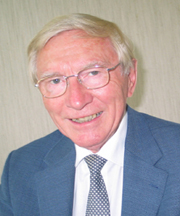 |
Master
degree in Chemistry Since 1995: Freelance consultant on occupational hygiene. 1989 to 1995: Director at Dragerwerk, Lubeck and also responsible for the training of occupational safety and health experts. 341 publications on air testing, European standards and occupational hygiene. 1975 to 1990: Lectureship on occupational hygiene at the Academies of Occupational Medicine in Berlin, Munich and at the Technical University, Lubeck. AIHA and ACGIH member. Founding member of the German Occupational Hygiene Society. 1992 to 2000: President, German Occupational Hygiene Society. 2001 to 2002: President of IOHA. Since 1993: Board Member of IOHA. 2004: Recipient of the Yant Award. 1994 to 2007: Consultant, evaluator, rapporteur and observer to the Commission of European Union. 1979 to 1999: Consultant on occupational hygiene to the World Health Organization. 1983 to 1987: Chairman of IUPAC (International Union of Pure and Applied Chemistry) Commission on Atmospheric Chemistry. |
|||||||||||||||||||||||||||||||||||||||||||||||||||||||||||||||||||||||||||||||||||||||||||||||||||||||
| Keynote 2 | David Caple, President, International Ergonomics Association, Australia | |||||||||||||||||||||||||||||||||||||||||||||||||||||||||||||||||||||||||||||||||||||||||||||||||||||||
|
David
Caple is the 16th President of the International Ergonomics Association
(IEA). His studies in psychology and ergonomics were in Australia
and UK before working in Sweden and the USA. |
|||||||||||||||||||||||||||||||||||||||||||||||||||||||||||||||||||||||||||||||||||||||||||||||||||||||
| Keynote 3 | Jorma Rantanen, Professor, ICOH, Finland | |||||||||||||||||||||||||||||||||||||||||||||||||||||||||||||||||||||||||||||||||||||||||||||||||||||||
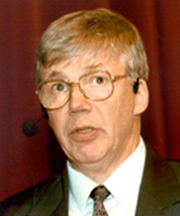 |
Profess or Rantanen, MD, PhD, born 13, Oct. 1938 made his PhD in radiation biochemistry in the Department of Medical Biochemistry of University of Turku, Finland in 1973. He is associate professor of radiation biology in University of Turku since 1975. He has made specialist exam in occupational health in 1985. From 1974 until 2003 he served for 30 years as Professor and Director General of the Finnish Institute of Occupational Health. He has published about 450 research articles on several topics covering radiation biology, medical biochemistry, toxicology, risk assessment, occupational health and safety services and on work in the information society. He has experience in practical occupational health service and in clinical occupational medicine. He has participated in the development of regulations for occupational health and safety in Finland and internationally. He has served as an expert for WHO, ILO and EU for decades. He participated in drafting of the ILO instruments on Occupational Health Services, the WHO Global Strategy on Occupational Health for All and recently the WHO/ILO/ICOH Guideline for Basic Occupational Health Services. He has served as a member and chair of several WHO, ILO and EU expert committees, advisory bodies and programs. Recently he presented an evaluation before the EU Parliament on the new EU Occupational Safety and Health Strategy 2008-2012.He has over 30 years experience on programs for occupational health in developing countries in Africa, and Asia and in Central and South America. Prof. Rantanen has conducted several evaluation projects of Finnish and foreign research institutions and programs. On request of the Finnish Government he has in 2004 and in 2006 evaluated the University research and administrative structures in 20 Finnish Universities and drafted a new legislation for increasing the autonomy of Finnish universities. He is currently a member of the steering groups for the US National Academy of Sciences evaluation of NIOSH research and he has served as a member of the respective steering group for evaluation of the UK HSE research.Professor Rantanen has served as the Board member of the ICOH and he was elected as President of ICOH for the tenure 2003-2006 and re-elected for 2006-2009. |
|||||||||||||||||||||||||||||||||||||||||||||||||||||||||||||||||||||||||||||||||||||||||||||||||||||||
| Keynote 4 | Thomas Smith, Professor of Industrial Hygiene, Harvard University, USA | |||||||||||||||||||||||||||||||||||||||||||||||||||||||||||||||||||||||||||||||||||||||||||||||||||||||
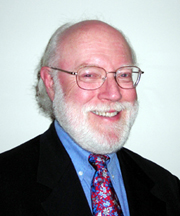 |
Dr. Thomas Smith is Professor of Industrial Hygiene in the Department of Environmental Health at the Harvard School of Public Health (HSPH). He is associate director of the HSPH Education and Research Center (ERC) in occupational health (Dr. David Christiani is the Director), and he directs the industrial hygiene training program, which is part of the center. Over the past 10 years, Dr. Smith has trained 7 doctoral students, served as on 9 epidemiologic doctoral committees, and trained 9 post-doctoral fellows. An important part of Dr. Smith’s training activities has been working with doctoral students in epidemiology to guide the development of their knowledge and skills in application of exposure biology in their studies. Dr. Smith’s primary research interests are the characterization of environmental exposures for epidemiologic studies of health effects in environmental and occupational settings, and investigation of the relationship between environmental exposure and internal dose. He has been an author on over 150 peer-reviewed scientific papers, and co-edited one book. For the past 6 years, Dr. Smith has been leading the exposure assessment as Co-PI for a cohort study of 55,000 workers in the US trucking industry together with the PI Dr. Eric Garshick of the VA Hospital System and Harvard Medical School. This study is investigating lung cancer mortality among workers who are exposed to diesel and other vehicle exhaust. The goal of this study is to determine quantitative risk of exposure to vehicle emissions and to determine if there is a distinct risk from diesel engine emissions, as opposed to general combustion emissions from all sources, such as trucks, automobiles and home heating. Dr. Smith also has been conducting a laboratory exposure study of human metabolism of 1,3-butadiene (BD), which is activated to epoxides by enzymes with genetic polymorphisms. BD is a very common urban air toxic pollutant which causes cancers in rats and mice, and is a probable human carcinogen. In his lab, uptake and washout of very small amounts of inhaled BD are observed for each volunteer using an approved human subjects protocol. Over 200 subjects have been tested. These data are fitted with a toxicokinetic model to estimate the rate of in vivo metabolism. Collaborative field studies of biomarkers of BD exposure also have been conducted in Taiwan in collaboration with Drs. Ho-Yuan Chang and Yue-Liang Guo at the National Cheng Kung University Medical College, and Dr. Tung-Sheng Shih at the Taiwan Institute of Occupational Safety and Health. The research techniques developed for BD will also be applied to other toxic materials in future studies. |
|||||||||||||||||||||||||||||||||||||||||||||||||||||||||||||||||||||||||||||||||||||||||||||||||||||||
| Keynote 5 | Shuh Woei Yu, Professor, Graduate Institute of Environmental Engineering, National Central University, Taiwan |
|||||||||||||||||||||||||||||||||||||||||||||||||||||||||||||||||||||||||||||||||||||||||||||||||||||||
 |
Education BS Chemical Engineering, National Taiwan University, 1969 Doctor of Engineering, Chemical Engineering, Tulane University, 1975 Employment
|
|||||||||||||||||||||||||||||||||||||||||||||||||||||||||||||||||||||||||||||||||||||||||||||||||||||||
| Keynote 6 | Thomas G. Grumbles, CIH, Sasol North America, Houston, Texas, USA | |||||||||||||||||||||||||||||||||||||||||||||||||||||||||||||||||||||||||||||||||||||||||||||||||||||||
Mr. Grumbles has 31 years of experience in the petrochemical industry. He is currently Manager of Product Safety and Occupational Health for Sasol North America Inc., and Global Coordinator for Product Stewardship, Olefins and Surfactants Division . In North America he manages corporate product safety and product stewardship activities, including transportation safety; occupational health, including toxicology and epidemiology; industrial hygiene; and occupational medicine programs. In the Global Coordinator role he has organized the efforts of Sasol Germany, Sasol Italy and Sasol North America to implement product stewardship globally and most recently is leading the effort for REACH compliance Mr. Grumbles is currently the President Elect of the International Occupational Hygiene Association and Chair of the IOHA National Accreditation Recognition Committee. This is the committee that manages the process of reviewing country accreditation/certification schemes for recognition against a set of International minimum program elements. Grumbles has recently served as the elected president of the American Industrial Hygiene Association. Previously, he served as secretary of the association from 1996 to 1998. He is a past winner of the AIHA Florence and Howard Kusnetz Outstanding Young Hygienist Award (1991). He served as a member of the Joint Association Ethics Task Force that revised the Industrial Hygiene Code of Ethics; served as both a member and chair of the AIHA Audit Committee; and chaired the Ad-hoc International Task Group that defined a specific path forward for AIHA in international affairs. He is currently Chair of an ad hoc group developing research and data to demonstrate the “value” of the occupational hygiene profession. Grumbles
received his bachelor’s degree in biology in 1974 from Transylvania
University, Lexington, Kentucky. He then went on to receive a master’s
degree in environmental health with a specialization in industrial
hygiene and air pollution control from the University of Cincinnati,
Kettering Laboratory, Cincinnati, Ohio, in 1978. He is certified
in the comprehensive practice of industrial hygiene by the American
Board of Industrial Hygiene. |
||||||||||||||||||||||||||||||||||||||||||||||||||||||||||||||||||||||||||||||||||||||||||||||||||||||||
| Keynote 7 | Seong-Kyu Kang, Director, Occupational Health Director of KOSHA, Korea | |||||||||||||||||||||||||||||||||||||||||||||||||||||||||||||||||||||||||||||||||||||||||||||||||||||||
 |
Dr. Seong-Kyu Kang has been the director of occupational health department at Korea Occupational Safety and Health (KOSHA) since 2005. He is responsible for the technical aspects in preventive activities of occupational health including industrial hygiene in Korea. He is an occupational physician and a family physician. He studied at the Dept of Family Medicine in Severance Hospital of Yonsei University in Seoul. He received a Ph.D. for Medical Science in 1993 from ChungNam National University. He was an Epidemic Intelligence Service (EIS) officer at the National Institute of Occupational Safety and Health (NIOSH) in Centers for Disease Control and Prevention (CDC), U.S.A. from 1995 to 1997. Dr. Kang has worked for the Korea Occupational Safety and Health Agency (KOSHA) since 1992. He served as the director of the Center for Occupational Disease Research, an affiliated organization of KOSHA, until 2005. He was responsible for investigating health effects caused by occupational exposure, which was requested by the Ministry of Labor and authorized by the Occupational Safety and Health Act. He has done many epidemiologic investigations on occupational diseases. Dr. Kang is interested in occupational neurotoxicity and biological monitoring of workers exposed to organic solvents. He has published many papers in peer review journals. He is an editor of peer-review journals. He is currently the Secretary of the Scientific Committee of Neurtoxicology and Psychophysiology of International Commission on Occupational Health (ICOH). |
|||||||||||||||||||||||||||||||||||||||||||||||||||||||||||||||||||||||||||||||||||||||||||||||||||||||
| Keynote 8 | Jung-Der Wang, Distinguished Professor of National Taiwan University, Taiwan |
|||||||||||||||||||||||||||||||||||||||||||||||||||||||||||||||||||||||||||||||||||||||||||||||||||||||
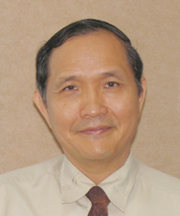 |
Experiences: | |||||||||||||||||||||||||||||||||||||||||||||||||||||||||||||||||||||||||||||||||||||||||||||||||||||||
1983-86 1986 1992-96 1987- 1993-9 1996-97 2002-05 2003-05 2006- 2006- |
Associate Professor of Occupational Medicine (NTU) Attending physician, Department of Internal Medicine, NTU Hospital President, Environmental and Occupational Medicine Association (Taiwan) Professor at Institute of Occupational Medicine and Industrial Hygiene (NTU) Director, Institute of Occupational Medicine and Industrial Hygiene (NTU) Visiting Professor, Mahidol University Faculty of Public Health (Thailand) Dean, College of Public Health, National Taiwan University President, Taiwan Public Health Association Staff of Department of Environmental and Occupational Medicine, NTU Hospital Distinguished Professor of National Taiwan University |
|||||||||||||||||||||||||||||||||||||||||||||||||||||||||||||||||||||||||||||||||||||||||||||||||||||||
| Awards and Honors: | ||||||||||||||||||||||||||||||||||||||||||||||||||||||||||||||||||||||||||||||||||||||||||||||||||||||||
1987 1988-96 1989 1996-2000 1998 2001 2003 2001 2006 2006 2007 |
Ten Outstanding Young Men of Taiwan Outstanding Research Award of the National Science Council listed on the “International Leaders in Achievements” Y-T Lee’s Outstanding Scholars Award Award for Outstanding Contribution in Science & Technology by Executive Yuan Outstanding Academic Award by the Ministry of Education of Taiwan Special Research Award of the National Science Council Elected Fellows of the Collegium Ramazzini Chair Professorship Award by the Ministry of Education (MOE) of Taiwan Distinguished and Chair Professor of the National Taiwan University 2nd time award of Chair Professorship Award by the MOE and permanent honor |
|||||||||||||||||||||||||||||||||||||||||||||||||||||||||||||||||||||||||||||||||||||||||||||||||||||||
| Services and Publications: In collaboration with my colleagues, Dr. Wang has already published and/or got accepted about 272 peer-reviewed papers in the field of occupational, environmental and public health, documenting 17 occupational diseases and 4 environmental diseases in Taiwan. About more than two-thirds of these papers are published on journals cited on Science Citation Index (SCI) or Social Science Citation Index (SSCI). In addition, he has also published about 53 articles or chapters in books and 5 books in Chinese and one textbook in English entitled “Basic principles and practical applications in epidemiological research”. Currently, Dr. Wang has been on the editorial boards of 4 international academic journals, of which 3 are listed on SCI or SSCI. |
||||||||||||||||||||||||||||||||||||||||||||||||||||||||||||||||||||||||||||||||||||||||||||||||||||||||
| Keynote 9 | David Parker, Physician in Occupational Medicine, Minneapolis, USA | |||||||||||||||||||||||||||||||||||||||||||||||||||||||||||||||||||||||||||||||||||||||||||||||||||||||
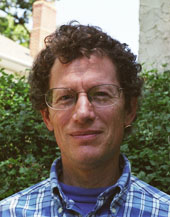 |
Dr. David Parker, Physician in Occupational Medicine, has served in the Epidemic Intelligence Service with the U.S. Centers for Disease Control and Prevention (CDC) and has published over 50 scientific manuscripts in the area of occupational safety and health, with a primary emphasis on machine safety and machine guarding. He is author of Before Their Time: The World of Child Labor (published September, 2007), Stolen Dreams: Portraits of Working Children, and By These Hands: Portraits from the Factory Floor. Dr. Parker’s photographs have been widely exhibited throughout the US and Canada and are in collections of the Library of Congress, the Minneapolis Institute of Arts, the Lowell National Historical Park, and the national headquarters of the AFL-CIO. Dr. Parker will bring a limited number of his books and will be available for signing. Dr. Parker is a practicing physician and occupational epidemiologist. He served as director occupational health programs for the Minnesota Department of Health for 17 years. Dr. Parker has published over 50 peer-reviewed manuscripts in occupational health and safety. He has written extensively in the area of child labor and public health. He has also written extensively about occupational health and safety in small businesses. |
|||||||||||||||||||||||||||||||||||||||||||||||||||||||||||||||||||||||||||||||||||||||||||||||||||||||
|
||||||||||||||||||||||||||||||||||||||||||||||||||||||||||||||||||||||||||||||||||||||||||||||||||||||||
|
||||||||||||||||||||||||||||||||||||||||||||||||||||||||||||||||||||||||||||||||||||||||||||||||||||||||
| Professional Development Courses | ||||||||||||||||||||||||||||||||||||||||||||||||||||||||||||||||||||||||||||||||||||||||||||||||||||||||
|
||||||||||||||||||||||||||||||||||||||||||||||||||||||||||||||||||||||||||||||||||||||||||||||||||||||||
| >>PDC Instructors profile | ||||||||||||||||||||||||||||||||||||||||||||||||||||||||||||||||||||||||||||||||||||||||||||||||||||||||
CPD Points
| Course Name/Location |
Start/ End Date |
CM Points |
Approval Number | Point Area |
IOHA 7th International Scientific Conference / PDCs = .5 IH CM point per .5 day
|
02/18/2008 |
.5 point per .5 day, 4.5/conference
|
07-1921 |
IH |
Tours Program (Tentative)
| Date |
Duration |
Type |
Tour |
Adult
Fee |
Child
Fee |
2/17 |
13:00-17:00 |
Pre-conference
Tour |
Wulai aboriginal village tour |
1,200 |
1,000 |
2/18 |
14:00-18:00 |
Accompanying
tour |
Folk
arts tour |
1,000 | 800 |
2/19 |
08:30-12:30 |
Accompanying
tour |
Chiufen
village & Northeast coast tour |
1,000 | 800 |
2/19 |
17:30-21:30 |
Culture tour |
☆Pinshi
sky lantern tour |
1,200 | 1,200 |
2/20 |
09:00-13:00 |
Accompanying
tour |
Northern
coast tour |
900 | 700 |
2/20 |
18:00-21:30 |
Conference tour |
Taipei night tour |
1,200 | 1,200 |
2/20 |
13:30-15:30 |
Culture tour |
Taipei
101 and National Palace Museum |
Included in Registration fee |
Included in Registration fee |
2/22 |
08:00-18:30 |
Technical visit |
☆China Steel(CSC)Technical visit | 4,600 | N/A |
2/21 |
09:00-13:00 |
Accompanying
tour |
Health
& culture tour |
1,200 | 1,000 |
2/21 |
06:30-17:00 |
Accompanying
tour |
Taroko Gorge tour |
4,900 | 4,000 |
2/23-24 |
2
days |
Post-conference
tour |
Sun
moon lake, Puli & Lukang tour |
5,400 | 4,300 |
Note: |
|
||||
Wulai is the most accessible area from Taipei to view the aboriginal tribesmen who once were the head hunters of Taiwan. Driving along scenic mountain road following a winding river, head to the authentic aborigine village and ride in unique push-car to the top of deep ravine. This is Wulai where aborigine girls will tell you of their lives in graceful song and dance.
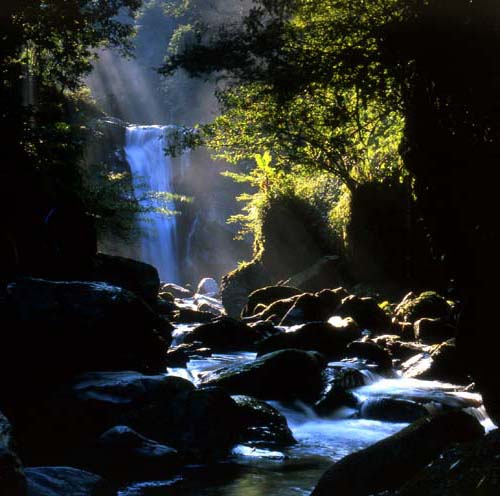
Yingge Ceramics Museum is closely related to human life and culture. Different features of ceramic culture developed from different families, different people. The discovery of Taiwan pre-history ceramic, the ceramic figurines and ceramic pots of the aboriginal, confirm the identical history of this island. The Yingge Ceramics Museum is the first ceramic theme museum established by county administration. It unveils a historical page of Taiwan Ceramic Development.
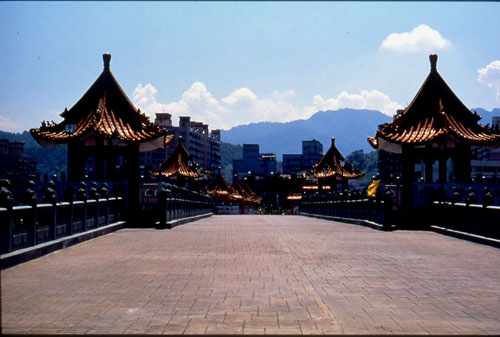
Chiufen used to the center of gold mining. It is located within the hills in northeast of Taiwan. The village is next to the mountain and facing the sea. In 1890, someone struck gold near Chiufen. The poor village with only nine families soon attracted prospectors of 4,000 families. The village once was gold city of Asia and called little Shanghai or little Hong Kong. However, with the decline of gold mining activities, Chiufen fades. Later, several movies chose to shoot here and the movies won international acknowledgement. These teahouses are best stops during visit to this mountain village. Also, there is the beautiful ocean view of Keelung outer sea.
The Northeast Coast National Scenic Area is located in the northeast corner of Taiwan. The scenic area is noted for its numerous capes and bays backed by green mountains.
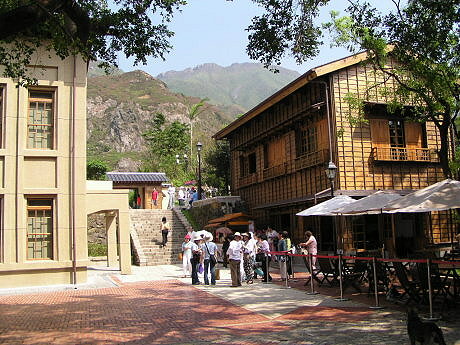
Pinshi is a rural township in the north eastern part of Taiwan. Located in a remote mountain area outside of Taipei and run through by Keelung river, it was a small coal mining town in the early 20th century. Sky lanterns are traditionally lanterns made of oiled paper with a bamboo frame that contain a small candle or other combustible material (such as the fake prayer's paper money). When lit the candle heats the air and causes the lantern to rise into the air. Ideally the lantern floats back to the ground when the fuel for the flame is exhausted.
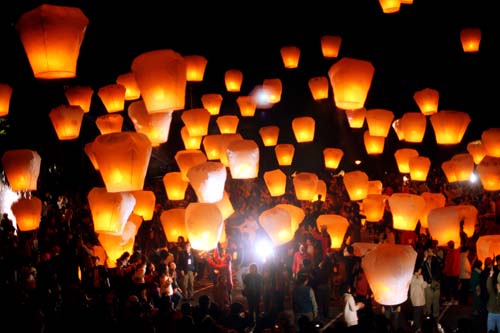
Feb. 20 Northern coast tour
Keelung Harbour is located in the northern Taiwan, with mountains surrounding on three sides.Serving as a natural harbor with immense water, Keelung has its bay cut into downtown deeply. Yeliu is a 1.7-kilometer-long cape that juts into the sea, where wave erosion, weathering, and the action of the earth's crust have combined to create sea-eroded trenches, candlestick rocks, mushroom rocks, bean curd rocks, beehive rocks, potholes, dissolved basins, and all sorts of other fantastic rock formations. Among the most spectacular and famous results of erosion here are those named Queen's Head Rock, Fairy Shoe, and Candlestick Rock.
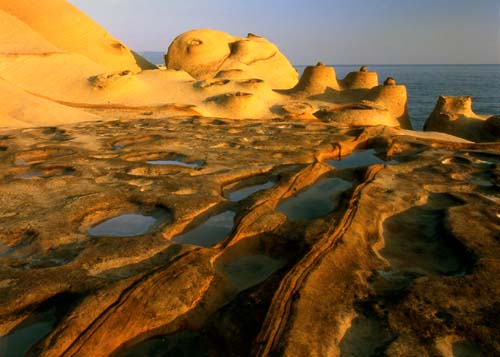
Currently the world's tallest building, the 508-meter tall Taipei 101 Tower combines the thousand-year-old wisdom of feng shui and Chinese cultural traditions with cutting-edge design and construction. Shaped like a bamboo, a symbol of growth, the building is made of eight units of eight floors each. The number eight symbolizes prosperity in Chinese culture. The three decorative features on the exterior of the building are considered to bring good luck: the ruyi (symbolizing good luck and promotion), the coin (symbolizing fortune and wealth), and the Chinese dragon (a benevolent mythical creature that brings success and good luck).
The National Palace Museum is the world's largest and most precious collection of Chinese art, some 700,000 pieces in all. Its artifacts constitute a magnificent part of the Chinese cultural heritage, and it is a must-see for foreigners visiting Chinese Taipei. Artifacts at the National Palace Museum span almost the entire five millennia of Chinese history, and most were once in the imperial collection.
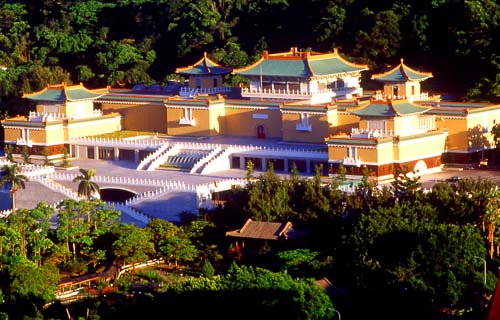
The night tour begins with an all-you-can-eat Mongolian barbecue dinner. Then visit one of Taipei's most renowned temples, the 260-year-old Lungshan Temple, whose striking architecture alone is worthy to visit. Next you will see the famous Huahsi St. Night Market, where you can try the tasty local snacks or pick up fascinating bargains on a wide variety of items. If performances of Chinese opera are staged during the time of the tour, you may also visit the Armed Forces Cultural Activity Center to observe the fascinating theatrical heritage of Chinese.

Paoan Temple was built more than 230 years ago, making it one of the island’s oldest temples. The three main deities worshipped at Paoan Temple, each with its own separate section, are Paosheng, the God of Medicine; Julaifo, the God of Luck; and Chusheng Niangniang, the Goddess of Birth and Fertility.
Dihua
Old Street is a hub of history which offers a window on Taiwan’s colorful
and quickly vanishing past. The narrow street has scores of shops selling
a variety of traditional Chinese goods: mysterious Chinese herbal medicines,
baskets and sacks of sun-dried foods, etc.
“Kung Fu” to most of us is rather a physical practice for health’s sake
than martial arts for fighting skills. To conduct one’s bold minds, breath
and circulation with energetic hits and actions, it is possible to reach
to unimaginable levels. After the Kung Fu show, you can enjoy the “Foot
Massage” is acupressure points health treatment for soles, and it is touted
as an ideal way to make you healthy if you are sick and make you better
if you are well. It is recently a very popular therapy for health sake.
You can experience such a medicine free yet need no hard exercise to improve
circulations and health condition.
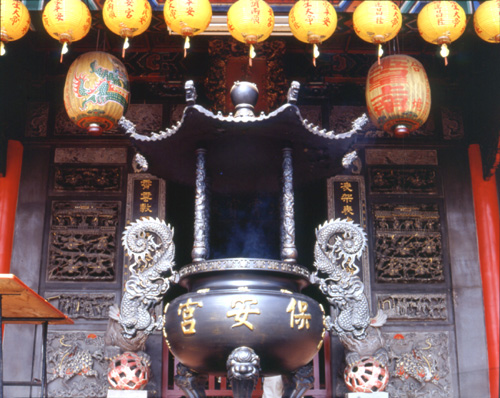
Taroko Gorge, one of the world's natural wonders, is an exceptionally beautiful, narrow ravine created by a river which has cut deeply through mountains of solid marble and granite. It is one of the seven wonders of Asia that no traveler should miss. After a 40-minute flight from Taipei to Hualien, you will be guided along a 12-mile stretch of highway built into awesome marble cliffs high above the rushing river. Your route will take you through 38 tunnels including the Swallows Grotto, the Tunnel of Nine Turns and the Marble Bridge of Motherly Devotion. After lunch you will visit Chi Hsing Beach and Stone Sculptural Park.

The Sun Moon Lake is the most famous lake attraction in Taiwan. With over 100 square kilometers, the lake got its name because the northern part of it has the shape of the sun and the southern part of it has the shape of crescent moon (those two parts are separated by Guang-hua Island). “Autumn Moon Scene of the Sun Moon Lake” is considered as the most attractive 12 sights in Taiwan.
The people of Nantou County in central Taiwan are proud of the natural beauty of Puli, a small town at the geographical heart of the island. The town is famous for its “four Ws”: weather, water, women, and wine.
The Village of Lukang, located about 180 kilometers south of Taipei, is known as a center of arts and handicrafts, particularly wooden and bamboo items. It is the nearest port to the coast of Mainland China. In earlier years, the city was the site of magnificent homes and temples of uniquely Taiwanese architecture. Some of these structures still exist today. The Lung Shan Temple is the prime example.
